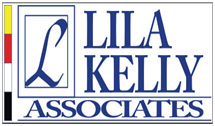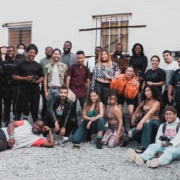Tips for Strategic Diversity Recruiting: Networking and Outreach to Diverse Communities
Assessing Recruiting Resources
Diversity Recruiting to be sustainable needs to be done in a strategic manner, which takes planning and persistence. First, what would you like your organization’s workforce to look like in the next 5, 10, 15 years? Thinking of all the diversity recruiting resources available, what approach is going to allow you to develop a talent pipeline to reflect that?
Organizations everywhere are trying to diversify their workforce to reflect the rapidly diversifying population. This is a struggle for many, since they continue to go to the same talent pools time and time again, instead of expanding their recruiting efforts. When seeking to recruit and hire a more diverse workforce, many organizations are left spinning their wheels, not really sure where to begin. A successful diversity recruitment program focuses on long-term strategy and building the organization’s brand in diverse communities.
Assessing the available recruiting resources and planning your recruiting strategy will lay the groundwork for a successful diversity recruiting program.
Here are some questions for you to ask when assessing diversity recruiting resources.
- What is the resource’s name, address, phone, email, website and/or contact person?
- What is the demographic breakdown in the communities served?
- Do they have a place where organizations can post job openings, and if so,
-
- Who is the contact person for posting jobs, and what is the process?
- How are the posting maintained/updated?
- Is there a fee to post, and if so, what is it?
- What other organizations have advertised, sponsored and/or hired people from this resource?
- What types of jobs and salary levels have community members served by this resource been placed in?
- Do they sponsor job fairs or other recruiting events?
- Do they have a publication in which organizations can advertise job openings?
- What kind of relationship with your organization has helped make recruiting and hiring people from communities they serve the most successful (i.e., just posting the jobs or more personal contact)?
Diversity resources may include community events and agencies, professional associations, colleges and universities, job search websites and publications. Keep organized notes tracking your progress for each of these. This assessment and documentation of resources may take a while, but it is critical for developing a strategic diversity recruitment program. Once this assessment is complete, you will be ready to lay out your plan and budget for the next year or longer.
Networking Outside of Your Comfort Zone
To diversify their talent pool, organizations need to network outside of their comfort zone. Since a high percentage of jobs are found through networking, it is critical to reach out to diverse individuals and communities.
Network in Diverse Communities
Do you know what your organization’s reputation is in diverse communities? Diverse job candidates have commented on how fast information travels in their communities. Often candidates determine which organizations they want to approach and which ones to avoid based on information gathered through their community networks. Mostly they are looking for work environments that have opportunities for career growth and that value and promote diversity.
Many BIPOC (black, Indigenous and people of color) have said that if a friend or someone they trusted told them that a particular organization is not welcoming to diverse employees, they would not apply there. An HR Director for a manufacturing company said that when he was working with an African American community agency, the director there told him, “We know which companies are racist and which ones aren’t. We know which companies are receptive to hiring blacks because the word just spreads. I mean, a couple people on the north side get rejected for jobs, and there are questions that are raised as to why. That just spreads like wild fire. People talk to one another.”
Work to brand your organization’s positive image in diverse communities. More than just the organization’s recruiters should be networking to further this effort and to identify potential future employees. Reach out to community centers, local businesses and schools to spread the word about the types of jobs you have and current job openings. Consider being a vendor or sponsor at a community event, such as at Juneteenth or Pride celebrations. Connect with professional associations in the area and/or offer internships.
This is an important step in taking a strategic approach to achieve targeted recruiting practices. Keep in mind that when networking in diverse communities, candidates are assessing you and your organization also. Check this Directory to see additional resources you could utilize in your networking initiatives. Let people know what jobs exist at your organization, what it takes to become qualified, and any assistance that might be available.
Network with Current and Past Employees
Reach out to current and past employees with diverse networks. This could be casually mentioning job openings to them in the hall or sending regular emails to them announcing job openings. Encourage them to share the job openings with their networks and ask them for referrals. Involve as many employees as possible in the recruitment process to always be encouraging qualified people who they know to apply. Consider implementing an employee referral program.
Past employees with diverse networks can be an excellent resource for finding diverse candidates. Every employee from an intern to an upper-level manager is a potential referral source. Communicating current job openings by word-of-mouth, through email, and/or by using social media can all be effective in recruiting new diverse talent.
Tips for Strategic Outreach to Diverse Communities
In addition to the tips offered at the beginning of each section in the Diversity Recruiting & Resource Directory, here are a few more things to consider for your strategic diversity recruitment plan.
The CEO of one of my client organizations said that he wanted to be known so well in diverse communities that if anyone even thought of looking for a job, they would think of his organization. Having a strategic recruiting plan to build your organization’s image and establish a positive presence within diverse communities will help make that happen.
To integrate equity into your hiring practices, maintaining a diverse applicant pool is important for when a job does open up. Even during the times when there are not many or any job openings, consistently and continuously cast a wider net to reach a more diverse audience. The goal is to build a diverse applicant pool. There is no such thing as “too many qualified applicants” in your applicant tracking system!
Community outreach can take a number of different forms, including:
- Reach out to the community like you care about them, do things that give back to the community. This will show an effort on your part and make a good impression. This may include:
- Offer free helpful training programs in communities, such as one bank in a poor neighborhood did that gave seminars on how to buy a home and make payments and on the basics of keeping and maintaining a home.
- Offer free training programs through local libraries or community centers.
- Connect with career centers and job fairs at schools and colleges with diverse student populations.
- Offer summer internships or scholarships to economically disadvantaged students.
- Support local communities by donating items such as playground equipment and new computers.
- Conduct business with vendors that are minority owned, which helps build a network in diverse communities.
- Work with community organizations such as the U.S. Hispanic Chamber of Commerce and its regional branches to form relationships and directly network within those diverse communities.
- Start recruiting before college—at the K-12 schools in your area. Go into elementary and high schools and introduce students to the type of careers that exist at your organization.
-
- Seek out opportunities to speak to students about the different types of careers that exist at your organization. If high school students express an interest in certain types of positions, consider offering them summer internships and/or scholarships.
- Support schools by donating a piece of playground equipment with your organization’s name on it. Most schools look for ways to generate revenue.
On the home front, have a recruiting system that works for all job candidates. One mistake that some organizations make is assuming that all candidates have equal access to the internet. With the application process almost all online now, it is easy to forget that not everyone has easy access to high-speed internet. To reach a more diverse audience, consider offering both online and offline application submissions, and make sure these options are clearly communicated. Being understanding and respectful of all applicants’ experiences will help provide equal access for all qualified talent.
By participating in community outreach, your organization is demonstrating that it has a vested interest in the community and not simply trying to fill a diversity quota. Remember, word can travel fast in diverse communities. If people think that an organization is unwelcoming or unfair to diverse candidates and employees, they may simply avoid it. Likewise, the opposite is true. Everyone would like to work at organizations with a good reputation!
Taking a strategic approach will help achieve your long-term goals to recruit and hire a diverse workforce. A facilitated discussion or blended learning workshop on strategic diversity recruiting strategies would be a great place to start. For example, you could begin with resources that provide opportunities to post job openings and internships, then move on to community events for networking.
Looking at the big picture, however, do not stop at achieving a diverse applicant pool. Eliminating bias in your hiring process and creating an inclusive work environment are also critical to hiring and retaining a diverse workforce. Remember, be persistent. If a new diversity recruiting initiative does not work at first, modify what you are doing and try something different. Do not give up.
— Copyright © 2023 Lila Kelly Associates, LLC. Not to be reprinted without written permission from Lila Kelly. Integrating Diversity into Hiring, Interviewing, Recruiting and Retention – Since 1992. This article includes excerpts from Lila Kelly’s online training and books at diversityintegration.com. To stay up to date on all the latest from Lila Kelly Associates & DiversityIntegration.com subscribe to our newsletter.






